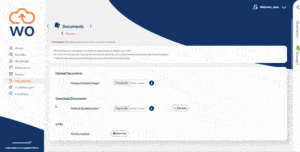The coronavirus pandemic has put hiring on temporary hold for many organisations.
A recent snapshot survey by Webonboarding found that one-in-four (25%) hiring teams have frozen recruitment since COVID-19 restrictions were put in place.
If your recruitment has been slowed right down or is on hold, there is a window of time for hiring managers and recruiters to review any existing processes and start planning for smarter ways of working and challenges ahead. Employee onboarding is a process that is often overlooked and can help businesses in the long term. A seamless and digital onboarding process from the point of offer to the first day, benefits both the engagement of the new hire and saves a business time and money.
With a continued shift towards remote working and with this looking like a new normal for many, organisations can use this time to review processes and look at how well an onboarding process can handle the additional demands.
Document your existing onboarding process
The best place to start when reviewing your process is to simply document exactly what you already have in place when it comes to an onboarding process. From the moment a successful candidate is chosen, what steps do you take to convert the person into a productive employee?
This may include:
- Welcome messages
- Contractual agreements – contracts/offer letters
- Reference checks and screening procedures
- Company information – packs/brochures
- Compliance policies – GDPR, health and safety etc
- Company background – history/story/ethos
- First day/week task administration – setting up accounts, allocating kit etc
For each of these steps, you need to identify how it’s done and who’s responsible. Is the information emailed or posted or is it left until the new starter begins their role in the workplace?
Review compatibility with remote onboarding
With a comprehensive roadmap of your existing process, you can start to look at how it can be adapted for remote working. The review needs to focus on the challenges for both remote working hiring teams and homeworking roles.
How do processes work if:
- A hiring team has no, or limited, access to a central office
- The new starter is working from home with no workplace attendance
You need to look at how viable your existing processes are and how you can manage and monitor tasks if onboarding is done remotely.
Remote hiring teams
Many of the traditional processes used to manage onboarding are based on having an office-based set-up. The office provides a central hub where documents can be stored and team members can easily collaborate.
When HR is being handled remotely, some changes need to be made so that processes can handle remote working. Problem areas include:
Documentation
Any kind of paper-based process is a potential problem for a remote working hiring team. The most commonplace use of paper documents is with contractual agreements – requiring an ink signature.
Management
Without a central office, managing and monitoring all of the tasks required to bring new workers into an organisation become a logistic headache. Keeping track of who is doing what requires a new approach to communications.
Productivity
Many tasks that can be quickly completed in an office become slow and unwieldy when a hiring team is working remotely. The information and tools they need are no longer instantly accessible.
Remote working roles
With more roles in the future likely to be remote, you need to review how well your onboarding process can adapt to the changes. Areas to focus on include:
Engagement
The experience of joining an organisation is completely different when a new starter is working from home. It removes so much of the socialisation that happens when a worker is part of a shared workplace.
Without making changes, the bonds between the employer and employee will be weak, raising the risk of candidates dropping out or leaving within their first weeks/months.
Administration
Typically, many of the documents that need to be checked and signed will be left until a new starter’s first day in the workplace. For a remote worker, this all needs to be handled online.
Preparations for a person’s first-day also need to be reviewed. A remote role may require tools, equipment or provisions to be sent to the person’s location before the job starts.
Documentation
All documentation needs to be checked to ensure that it’s relevant and appropriate for a remote working role. Along with updated contracts, this may include revisions to health and safety, data protection and expense policies.
Identify areas for change
While some aspects of your onboarding process may cope with the shift to remote onboarding, others will require a fresh approach. This requires some innovative thinking and making the best use of today’s management and communication tools.
Webonboarding is a cloud-based system which handles the whole onboarding process remotely. An online portal provides candidates with everything they need, with the whole process automated and tracked in real-time.




